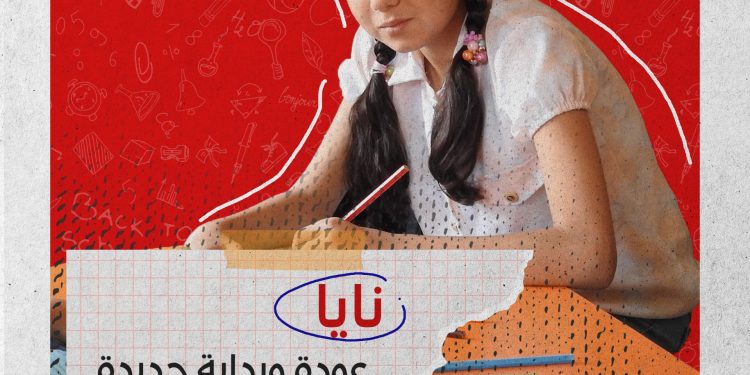Ten years of hardship between birth, danger and displacement
For the past ten years, families have been going through difficult conditions in many Syrian regions, and these ten years constitute the life of Naya, the girl who was displaced with her family from the village of Deir Ful in Homs countryside to Salamiyah in Hama countryside, after their house was destroyed years ago, and their lives were endangered.
In addition, Naya suffered from the effects of the problems that accompanied her since birth, which made her fall behind the rest of her classmates; This led her to refuse to integrate, prefer sitting alone, and rely on her mother, who tried to change her behavior, but to no avail.
In the direction of socializing and participation… A return and a new beginning
After Naya’s family returned to their village again, the mother heard about the services of the community center offered by the Syrian Arab Red Crescent in the Rastan area near Deir Ful, so she quickly registered her child, and Naya’s mother talks about this, saying:
“I never imagined that my child would reach this level of development and socialization with the rest of the children. I feel indescribably happy with every improvement I see in my little girl’s life. After I registered her in the social care center, they referred her to the home rehabilitation program. The volunteers began to follow up on her case, and they invited me to attend awareness sessions to acquire the necessary skills to address some of the problems that she suffers from. This follow-up had a great impact on Naya who improved her performance and became able to socialize with her friends. She no longer wanted to be alone and she became very self-reliant. Naya was not the only one who benefited, I too noticed that I was able to follow up on her condition and deal with it in ways that develop her abilities in various fields.”
Various services for returnees, displaced and affected people
Naya and other children participate in the activities, sessions and programs offered by the social care centers to all members of the local community, the displaced or those returning to the area, inside the center or through mobile teams, and they include the areas of: livelihoods, home rehabilitation, psychological support, women’s empowerment, Child protection, public aid (in kind and medical), community initiatives, in addition to educational services.

